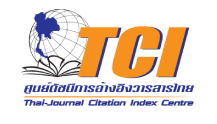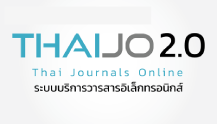Needs of Stakeholders in Fast-Track Care for ST-Segment Elevation Myocardial Infarction (STEMI)
Keywords:
Needs of Stakeholders, STEMI fast track care, Community Hospitals, Emergency department, needs of stakeholdersAbstract
Objective: To describe needs of stakeholders in fast-track care for ST-segment
elevation myocardial infarction (STEMI).
Design: Descriptive qualitative research.
Methodology: The participants in this study were selected via purposive sampling
and divided into two groups: (1) patients and/or their relatives (n = 30) in fast-track care
for STEMI; and (2) healthcare providers (n = 20). Data were collected using semi-structured
interviews, observation and feld notes, and were analysed using content analysis.
Results: Needs of the patients and/or their relatives included 1) information and
communication (information on STEMI, on severity of STEMI symptoms and on the
need to seek medical attention; communication; and shared decision making), and 2)
psycho-social support (fnancial compensation during ACS event, moral support, a
supportive environment, and support by family members).
Meanwhile, needs of healthcare providers in STEMI fast-track care included 1)
critical care skill (early detection, skill enhancement, increased competency of care for
patients with STEMI); 2) effective organisational management (increased budget,
suffcient workforce, and suffcient cardiologists); 3) medical equipment support (stability
of equipment, and communication through medical service networks); and 4) effectiveness
of the caregiving system (effective use of the EMS, appropriate and effective communication,
effective guideline-based strategies, and effective risk management and proper insurance
coverage for accident victims).
Recommendations: The results of this study can be used to improve STEMI fast-track
service, particularly by providing information on specifc signs and symptoms of STEMI,
to help patients realise their conditions and decide to receive early care. Nurses should focus
on developing effective and cross-cultural communication to promote positive nursing outcomes.
Regarding risk management, the system of providing accident victims with proper insurance
coverage and compensation should be developed based on the context of each hospital,
to ensure an effective practice.
References
1. Bureau of Non Communicable Disease. The number of death and mortality rate of acute coronary disease per 100,000 people [Internet]. 2016 [cited 2017 Dec 20]. Available from: https://www.thaincd.com/ 2016/mission/documents.php?tid=32&gid= 1-02037
2. O’Gara PT, Kushner FG, Ascheim DD, Casey DE, Chung MK, et al. 2013 ACCF/AHA guideline for the management of ST-elevation myocardial infarction: a report of the American College of Cardiology Foundation/American Heart Association task force on practice guidelines. J Am Coll Cardiol 2013; 61(4):78-140.
3. Ibanez B, Jame S, Agewell S, Antunes M, Beuno H, et al. ESC guideline for the management of acute myocardial infarction in patients presenting with ST-segment elevation. Eur Heart J 2017; doi 10.1093/eurheartj/ehx393
4. Thanasomboonpan S, Kraysubun C. ST-segment Elevation Myocardial Infarction(STEMI). The Journal of Prapokklao Hospital Clinical Medical Education Center 2014;31:30-42. (In Thai)
5. Untaja P., Sindhu S. Evaluation project for factors associated successful access to treatment of the patients
with ST-elevated myocardial infarction (STEMI) to improve emergency medical services system. [Internet]. 2011 [cited 2016 Jun 20]. Available from:https:// www.niems.go.th/th/Upload/File/255907081 003085669_bJ8PgJ0H84CneiaD.Pdf. (In Thai)
6. Deephaisarnsakul P. Expectation and Perception of the clients about the service quality of the hospital. Social sciences and arts 2013; 6: 573-92. (In Thai)
7. Sandelowski M, Leeman J.Writing usable qualitative health research fndings. Qual. Health Res. 2012; 22: 1404–13
8. Lincoln YS, Guba, E. Naturalistic inquiry. Beverly Hills: Sage; 1985.
9. Curtis JR, Back AL, Ford DW, Downey L, Shannon SE, et al. Effect of communication skills training for residents and nurse practitioners on quality of communication with patients with serious illness: a randomized trial. JAMA. 2013; 310: 2271-81.
10. Wongduan N, Sasiwongsaroj K, Doungphummes N, Bhibulbhanuvat S, Intercultural communication competence for health care services in migrant workers: The 15th graduate research conferences. Khon Kaen University. [Internet]. 2014 [cited 2017 Dec 20]. Available from: https://gsbooks.gs.kku.ac.th/57/ grc15/fles/hmo51.pdf (in Thai)
11. Hsiao PR, Redley B, Hsiao YC, Lin CC, Han CY, Lin HR. Family need of critical ill patients in the emergency department. Int Emerg Nurs 2017; 30: 3-8.
12. Salmond SW. When the family member is a nurse: The role and needs of nurse family members during critical illness of a loved one. Intensive Crit Care Nurs 2011; 27: 10-8.
13. Al Mutair AS, Plummer V, Obrien A, Clerehan R. Family needs and involvement in the intensive care unit: a
literature review. J Clin Nurs 2013; 19: 1805–17.
14. Modthong W. Results of improvement on service behavior of outpatient department staff at Buriram hospital. Journal of Nursing and Health Care 2012; 30:140-146. (In Thai)
15. Krairatcharoen N, Lekutai S, Pongthavornkamol K, Satayawiwat W. Factors influencing the decision making to seek treatment of patients with acute myocardial infarction. Journal of Nursing Science 2010; 28: 49-57. (In Thai)
16. Coyne I, Oneill C, Murphy M, Costello T, Oshea R. What does family centered care mean to nurses and how do they think it could be enhanced in practice. J Adv Nurs 2011; 67: 2561-73
17. Davidson JE, Jones C, Bienvenu OJ. Family response to critical illness: Post intensive care syndrome– family. Crit Care Med 2012; 40: 618-24.
18. Bailey JJ, Sabbagh M, Loiselle CG, Boileau J, McVey L. Supporting families in the ICU: A descriptive correlational study of informational support anxiety and satisfaction with care. Intensive Crit Care Nurs
2012; 26: 114-22.38
19. Suriyawongpaisal P, Sethumrungswun S, Chatbunchai V, Chetstian A, Khositchaivut J, et al. The evaluation
of emergency medical service development. Nonthaburi: Nation Institute for Medicine Service; 2010 (In Thai)
20. Coll BM, Jimnez Herrera MF, Llaurado SM. Emergency nurse competence in electrocardiographic interpretation
in Spain: A cross-sectional study. J Emerg Nurs 2017; 43(6): 1-11.
21. Benner P. From novice to expert. Am J Nurs 1982;402-7
22. Fathoni M, Sangchan H, Songwathana P. Relationships between triage knowledge, training, working experiences
and triage skills among emergency nurses in East Java, Indonesia. [Internet]. 2015 [cited 2017 Dec 20]. Available from: https://tar.thailis.or.th/bitstr eam/ 123456789/918/1/009.pdf
23. Sanders SF. Accuracy of emergency nurse triage of patients with symptoms suggestive of acute myocardial
infarction. [Internet]. 2015 [cited 2017 Dec 20]. Available from: https://www.nursinglibrary.org/ vhl/handle/10755/601888
24. Di Somma S, Paladino L, Vaughan L, Lalle I, Magrini L, et al. Overcrowding in emergency department: An
international issue. Intern Emerg Med 2015; 10(2): 171-5.
25. Bohmer E, Hoffmann P, Abdelnoor M, Arnesen H, Halvorsen S. Effcacy and safety of immediate angioplasty versus ischemia-guided management after thrombolysis in acute myocardial infarction in areas with very long transfer distances: results of the NORDISTEMI (Norwegian Study on District Treatment of ST-Elevation Myocardial Infarction). J Am Coll Cardiol 2010; 55: 102-10.
26. Sethasathien A, Sirisamutr T, Wachiradilok P, Dairoob S, Nimma S. Situation and causes of ambulance
crash in Thailand. Journal of Health Systems Research 2015; 9(3): 279-93. (In Thai)
27. Chadbunchacha V. The guideline for prevention of ambulance accident. [Internet]. 2015 [cited 2017
Dec 20]. Available from:https://www.niems.go.th/ th/DownloadFile.aspx?CateTypp=DataService& ContentId=25571208010859035






